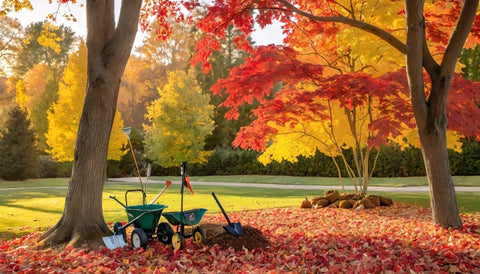Introduction
Creating a wildlife-friendly garden isn't just about aesthetics—it's about nurturing the local ecosystem and fostering a loving relationship with nature. As the leaves begin to turn and fall settles in, it's the perfect time to think about how trees can play a pivotal role in attracting and supporting wildlife. Fall gardening offers unique opportunities to create habitats that sustain our feathered friends and furry neighbors during this transitional season.

Understanding Wildlife Needs in Fall
As summer breezes into fall, wildlife starts to prepare for the colder months ahead. Birds might be migrating south, while others are busy storing food for winter. This seasonal behavior highlights the need for gardens that provide essential resources—like food and shelter. Trees serve as both a food source and a potential nesting site, making them invaluable during this time.
Key Criteria for Wildlife-Friendly Trees
When selecting trees for your fall garden, consider the following key criteria. Native species are crucial, as they are adapted to local climates and support local wildlife. Look for trees that produce fruits and berries to attract various birds and mammals. The leaf structure and canopy are also important, as they provide necessary shelter and nesting options. Lastly, deciding between deciduous and evergreen trees can impact wildlife, with each offering unique benefits.

Top Trees for Wildlife in Fall Gardens
A. Oak (Quercus spp.)
Oaks are nothing short of a wildlife haven. With their acorns providing essential food for many animals and their expansive habitats offering shelters, they’re a top pick for any garden. Plus, their rich fall foliage adds a stunning touch of color.
B. Dogwood (Cornus spp.)
Dogwoods are versatile trees that not only showcase beautiful flowers in spring but also feast for wildlife in the form of berries in fall. Their vibrant fall colors are an added bonus, making them a delight to observe.
C. Serviceberry (Amelanchier spp.)
With edible berries that birds adore, the serviceberry is a sweet addition to your garden. These trees are adaptable, thriving in a range of soil types, and their spring blooms create a lovely spectacle.
D. Hawthorn (Crataegus spp.)
Known for their dense branches and stunning berries, hawthorns provide shelter and food for countless bird species. Their unique thorns also serve as a natural pest deterrent!
E. Red Maple (Acer rubrum)
Red Maples are not just eye candy with their stunning fall hues; they also play an essential role in diverse habitats. Don’t forget that they’re a nectar source for pollinators, which is vital for maintaining a balanced ecosystem.
F. Black Cherry (Prunus serotina)
Black Cherry trees are a feast for various wildlife. Their fruits attract birds, while their resilience to different climates makes them easy to incorporate into your garden. Their gorgeous fall foliage is just the cherry on top!
Planting Tips for Success
When planting these trees, think about their ideal locations. Most prefer areas with ample sunlight and well-draining soil. Ensure that you allow enough space for their growth; crowded trees can lead to stunted growth and health issues later on.
Additional Considerations for Wildlife Gardens
Consider companion planting to enhance biodiversity in your garden—it’s incredible what a mix of understory plants can do! Also, be sure to provide water sources to attract amphibians and birds. And here’s a crucial tip: minimizing pesticide use helps preserve the wildlife you’re trying to attract.

Conclusion
Incorporating wildlife-friendly trees into your fall garden is an investment in both beauty and biodiversity. By connecting with local wildlife, you’re not just creating a garden; you’re fostering a thriving ecosystem. What trees have you planted in your garden? Share your experiences and any additional tree suggestions in the comments below!






























Comments (0)
There are no comments for this article. Be the first one to leave a message!